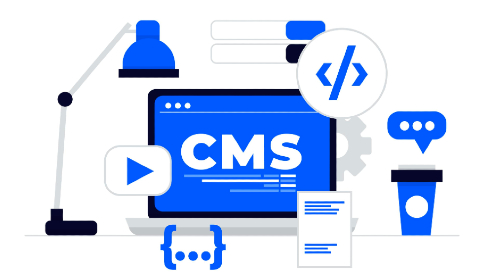7 Tips For Designing Low-Carbon Websites
Sustainability is the new trend. And this is true for your website designs too! Over the last few years, many discussions have been held on this, encouraging people to opt for a more sustainable approach. Sustainability basically means to transform rather than rebuild. Many such transformation projects have been created in the last few years, encouraging individuals to adopt a sustainable routine. One such example is the browser Ecosia, which uses the revenues from advertisements to support NGOs working for saving trees and reforestation. So, if you are a product, UX, or web designer, you should know the best practices for creating sustainable digital products and low-carbon websites are among them.

The preconceived notion about the digital industry is that it does not contribute to any form of pollution. This is what most of us believe when it comes to digital products, along with the most visited websites in the world. But this is far from the truth. The IT sector uses about 10% of the world’s electricity, and energy consumption grows at around 9% every year. Also, it is responsible for approximately 4% of all carbon emissions. It is because more websites are created, especially those that consume a lot of energy like Netflix. The more people go to this site and stay for long, the more energy they consume. It is a serious issue and can only be addressed by designing websites that come with a low carbon footprint.
Low-Carbon Websites – Is That Even Real?
If you consider history, you will see that it is very much possible to build low-carbon websites if we really want to. As technology advances and we get to endorse super high-speed internet connectivity – 4G then 5G, we invariably end up with websites that download at lightning-fast speed and consume more resources. But that is exactly where we need to draw the line – to consume fewer resources and make websites that contribute less towards carbon pollution. That means we need to ensure many aspects of web design, in order to come up with a sustainable website.
In this article, let us explore some ideas on how to design low-carbon websites and contribute to a better world.
1. Streamlining the Content
The primary aim here is to reduce energy consumption by a website. It can be done by creating simple sites – for this, the designers would have to give more focus to the core functionalities. Also, as the website grows, the volume of content will magnify. This is one of the significant reasons behind wasted electricity on a website. In such cases, you should review your site content and ensure that it does not get bloated or confusing- storing vast amounts of content will not only increase your web pages but would take up more space on the hard drive which consumes electricity round the clock.
2. Simplification of the User Experience
It is also equally essential to simplify the journey of the users. It helps to avoid ambiguities or redundancies throughout the trip and improve sustainability. The first thing to focus on here is to reduce any unnecessary loaded pages. The more users load data, the more electricity is consumed, and this, in turn, increases the carbon emission. Also, it is crucial to avoid the “yoyo user journey,” wherein the users continuously go back to the previous pages to find an item or information.
3. Image Optimization
Images are one of the primary reasons behind the carbon emission from the digital industry. So, it is essential to reduce the weightage or bulk of the images by using some efficient file formats and compression tools that would help in the optimization process. If you are using videos on the site, ensure that it does not auto-play – designers can give the play buttons so that the videos would only play when the user wishes.
4. Efficient Web Typography
Try to go for fonts pre-installed on the devices. Other typography can considerably increase the data transfer and also the server request needed to load a page. This, in turn, has a negative impact on the environment. Also, ensure to optimize the font files.
5. Green Infrastructure
There are specific steps that you can follow to achieve the goal of sustainable web design. Try to reduce the data transfer by reducing the page loads. Also, decrease the carbon intensity of electricity by locating a data center with low carbon energy. It might not be possible for website owners to control energy use by telecom networks and users. But they still have control over how the data centers consume energy and can consciously opt for the right hosting service providers.
6. Sustainable Web Development
Well-written codes are always more efficient in terms of sustainability. You can always write code without using bloated libraries and plugins with more functionalities than needed. Doing so will help reduce the overall energy consumption on the site.
7. Verification Tools
Once you have tried out all the tips shared above, you can use a verification tool to see how sustainable your website is. These tools can quickly analyze the overall performance and everything that consumes more data, from the number of elements to server calls. You can employ tools to verify or test the sustainability quotient of your website.
Summary
Greening the Internet, i.e., making it more sustainable, is no longer a distant dream since many notable organizations worldwide have started gearing up for it. For instance, IT giant Google is known for its commitment to renewable energy and various initiatives undertaken for the purpose.
The idea is to create a genuinely clean web, reduce carbon emissions and transform the entire digital landscape towards climate-friendliness. A low-carbon website that offers an enriched user experience is actually a win-win situation for everyone involved starting from the users of the Internet and the website owners to our planet Earth.




Leave a Reply